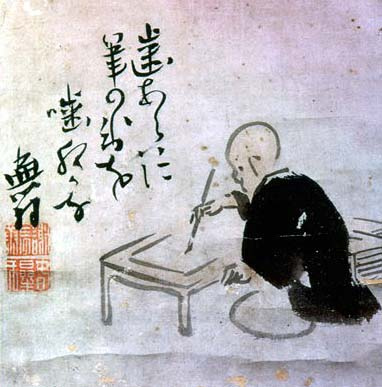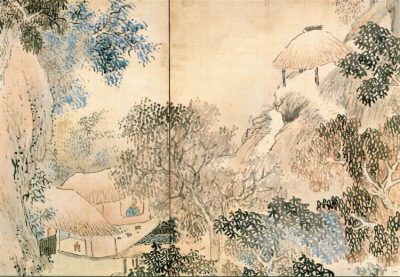Japan poetry and Yosa Buson: Footsteps of Matsuo Basho
Lee Jay Walker
Modern Tokyo Times

The poetry of Yosa Buson (1716-1784) in Japan is highly acclaimed because his haiku reached the hearts of many. Indeed, despite being a distinctive artist during the Edo Period, it is his haiku that stands out. Hence, the fame that remains bestowed on Buson is based on the poetry that he created in abundance.
In translations by Robert Hass, the distinguished Buson wrote:
Blown from the west,
fallen leaves gather
in the east.
Of course, meanings can be manipulated, turned overly artistic, and so forth, to each reader. Yet, the above words easily fit into the early life of Buson. After all, he was born in the environs of Osaka in the West of Japan but despite the relative wealth he was born into, Buson took a risk by focusing on poetry and moved to Tokyo in Eastern Japan. Hence, he was blown from the West and at first, he became a fallen leave in Tokyo (Edo) despite in time moving to the highly cultural city of Kyoto.
In another poem Buson wrote:
Before the white chrysanthemum
the scissors hesitate
a moment.

It is known that Buson adored Chinese poetry, focusing heavily on Chinese and Japanese classics, and revering Matsuo Bashō. All the above – along with the rich creativity of Buson – enabled an inner spark to shine brightly within his artistic soul.
Indeed, the love and admiration that Buson held for Bashō are etched into history based on literally following in his footsteps. Bashō had written in the wilds of Northern Honshu and wrote a valuable travel diary that meant a great deal to Buson. Hence, Buson traveled a similar journey based on Bashō’s diary, titled Oku no Hosomichi (The Narrow Road to the Interior). Therefore, one can only imagine the inner-love that Buson felt during his travels that entwined him with the poetry of Bashō.
Buson wrote, not even a bird singing in the mountain’s shadow and this can be imagined during the heightened passion that he felt while following in the footsteps of Bashō. In other words, while reading Oku no Hosomichi and walking in the shadow of Bashō, he could enter a world where even nature became blacked out.

Modern Tokyo News is part of the Modern Tokyo Times group
DONATIONS to SUPPORT MODERN TOKYO TIMES – please pay PayPal and DONATE to sawakoart@gmail.com
http://moderntokyotimes.com Modern Tokyo Times – International News and Japan News
http://sawakoart.com – Sawako Utsumi personal website and Modern Tokyo Times artist
https://moderntokyonews.com Modern Tokyo News – Tokyo News and International News
http://global-security-news.com Global Security News – Geopolitics and Terrorism
PLEASE JOIN ON TWITTER
https://twitter.com/MTT_News Modern Tokyo Times
PLEASE JOIN ON FACEBOOK